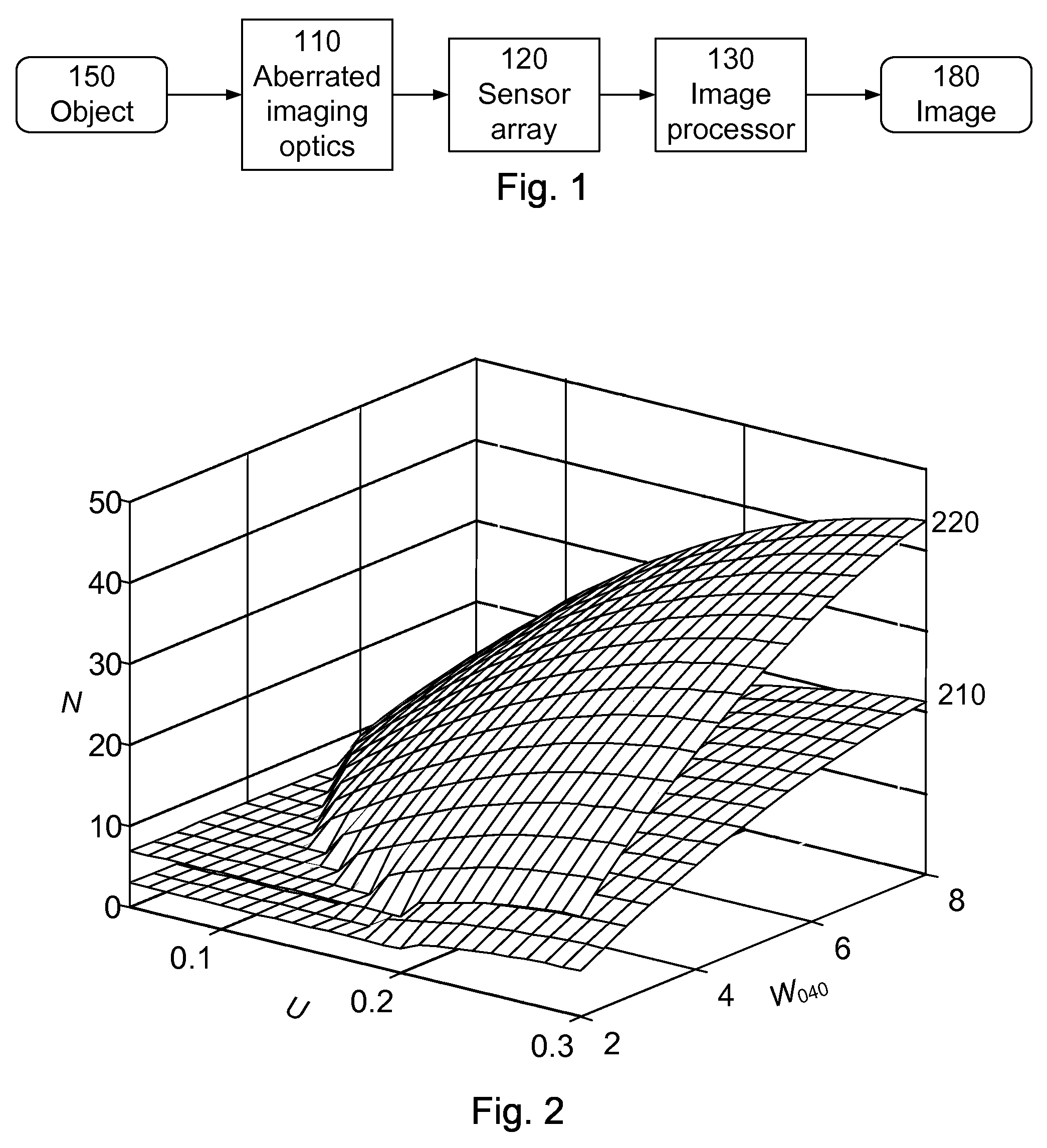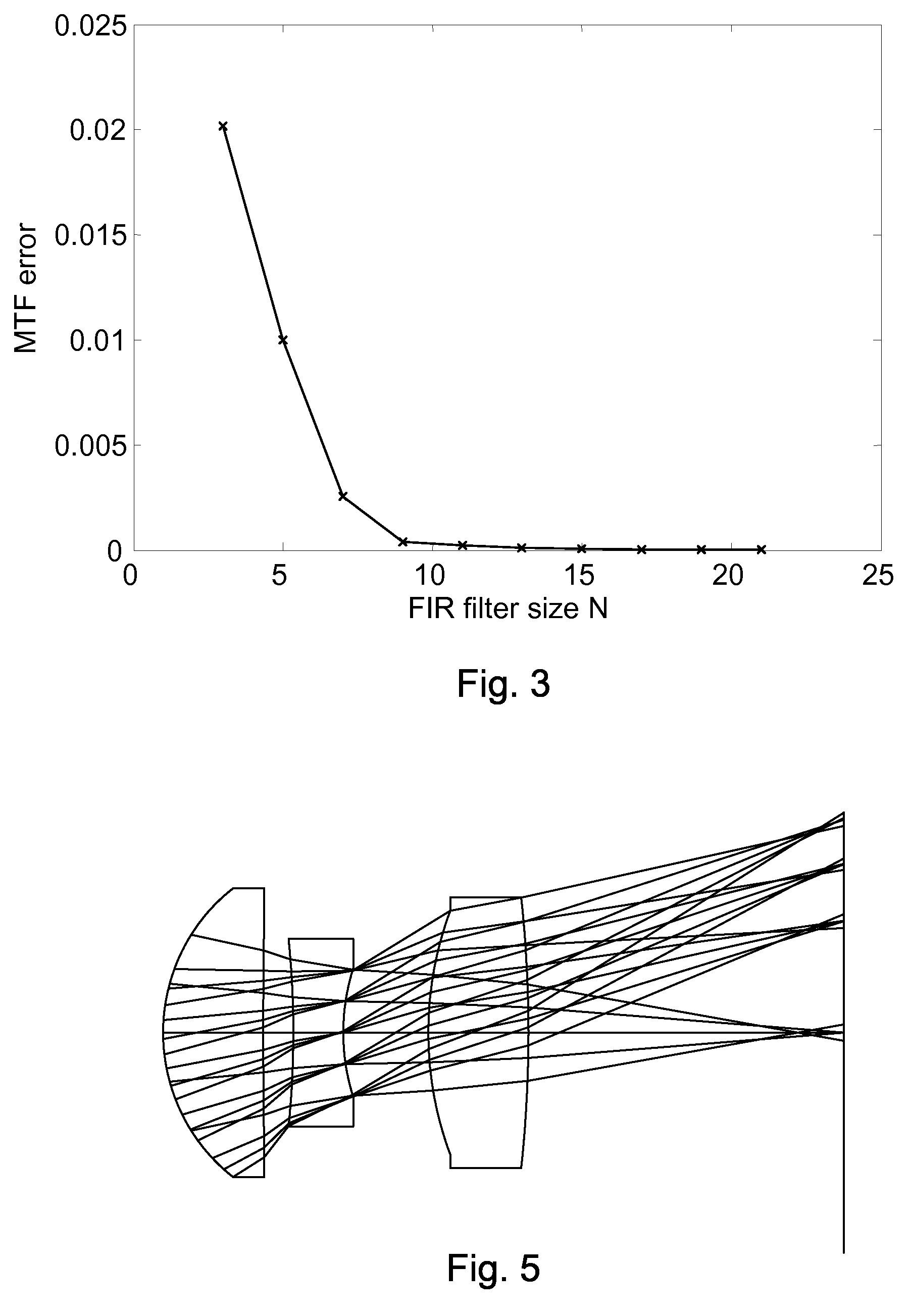Imaging system using enhanced spherical aberration and specifically sized FIR filters
a technology of spherical aberration and imaging system, applied in the field of imaging system, can solve the problems of affecting the design of electro-optic imaging system, affecting the overall system, and ignoring the synergies between optics and digital image processing subsystems,
- Summary
- Abstract
- Description
- Claims
- Application Information
AI Technical Summary
Benefits of technology
Problems solved by technology
Method used
Image
Examples
Embodiment Construction
[0023]FIG. 1 is a block diagram of a digital-optical imaging system according to the invention. The imaging system includes imaging optics 110 (e.g., a lens assembly), sensor array 120 (e.g., CCD detector array) and image processor 130 (e.g., typically implemented in dedicated chips or software). The imaging system produces a digital image 180 of an object 150. It is a “digital-optical” imaging system in the sense that optics 110 are used to produce an image on the sensor array 120, and the captured image is digitally processed by the image processor 130.
[0024]Various aspects of the invention are especially beneficial for imaging systems used in consumer devices, for example a cell phone camera or digital camera. Many of these consumer applications operate primarily (or even exclusively) in the visible wavelength region, at F / #'s between approximately F / 2 and F / 6, and over fields of view up to about 60 degrees full field. The corresponding sensor arrays 120 often have pixel pitches ...
PUM
 Login to View More
Login to View More Abstract
Description
Claims
Application Information
 Login to View More
Login to View More - R&D
- Intellectual Property
- Life Sciences
- Materials
- Tech Scout
- Unparalleled Data Quality
- Higher Quality Content
- 60% Fewer Hallucinations
Browse by: Latest US Patents, China's latest patents, Technical Efficacy Thesaurus, Application Domain, Technology Topic, Popular Technical Reports.
© 2025 PatSnap. All rights reserved.Legal|Privacy policy|Modern Slavery Act Transparency Statement|Sitemap|About US| Contact US: help@patsnap.com



